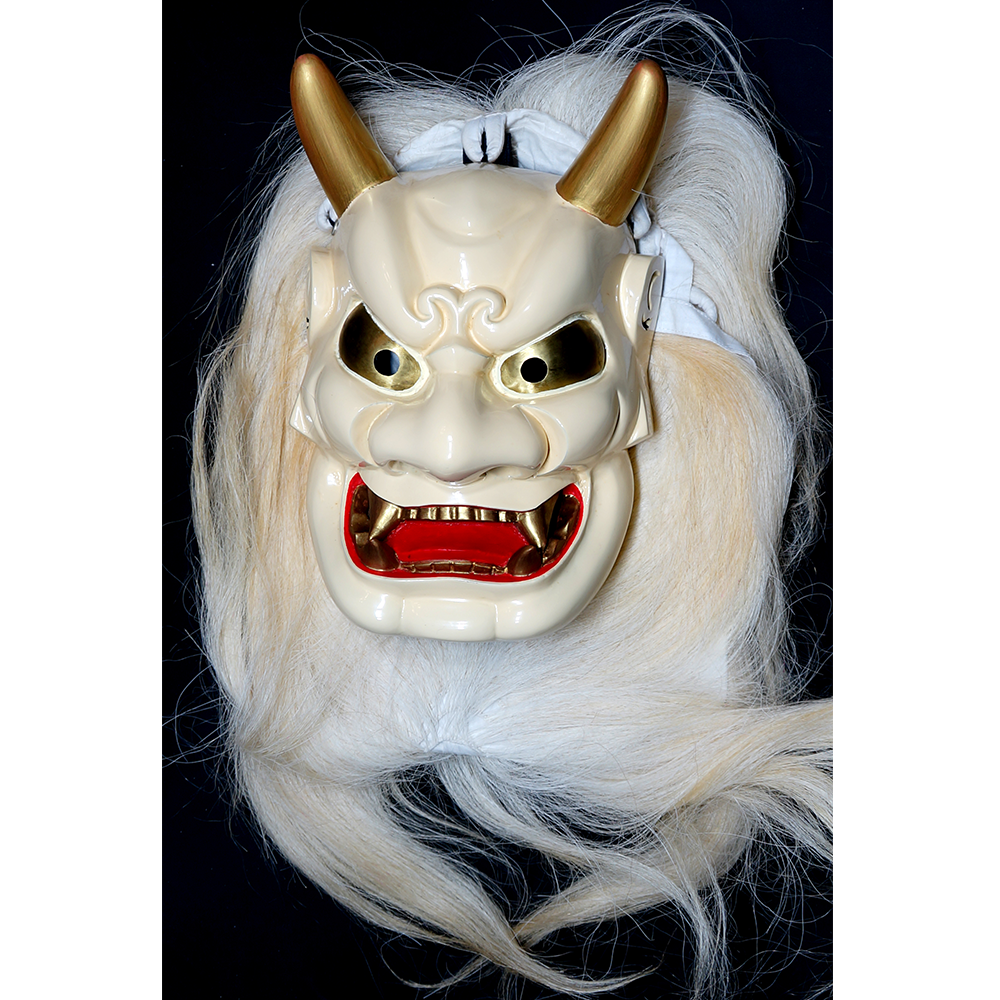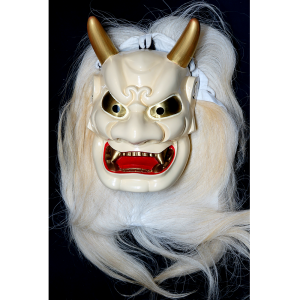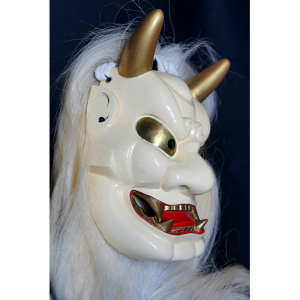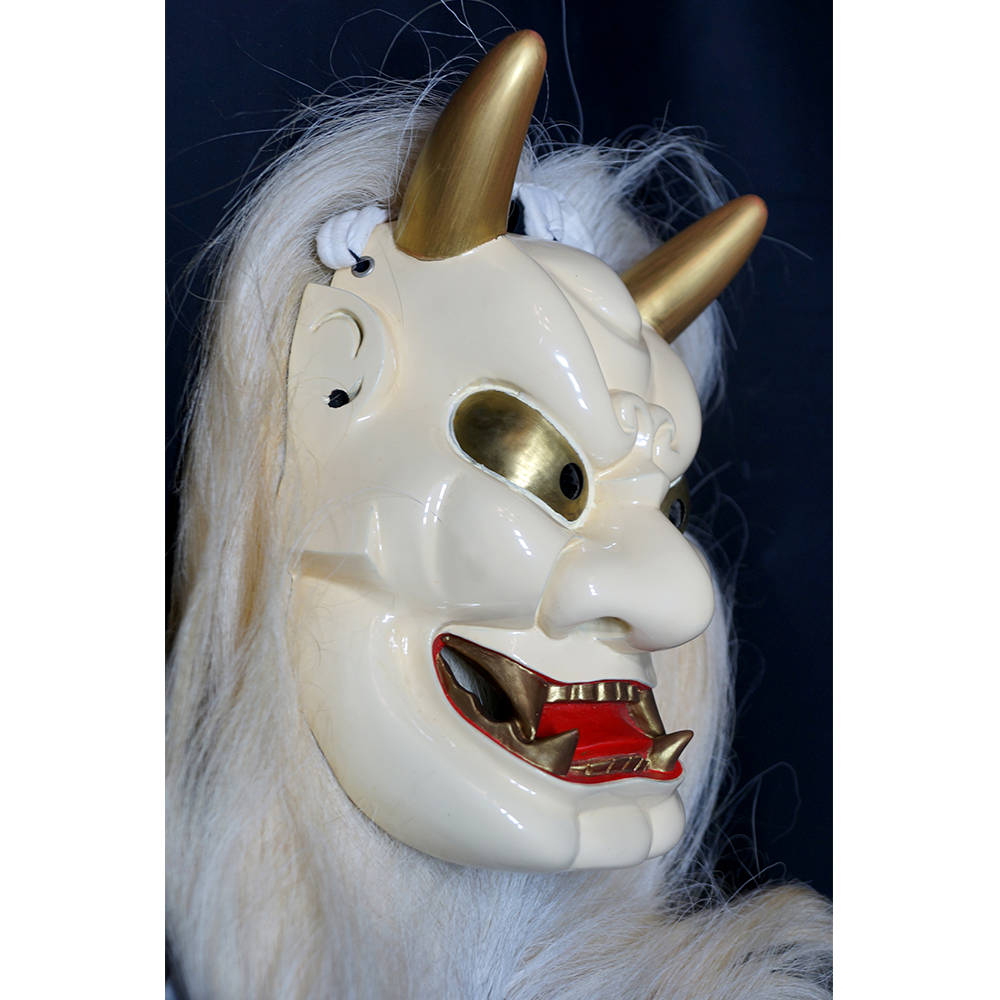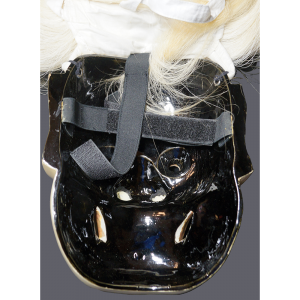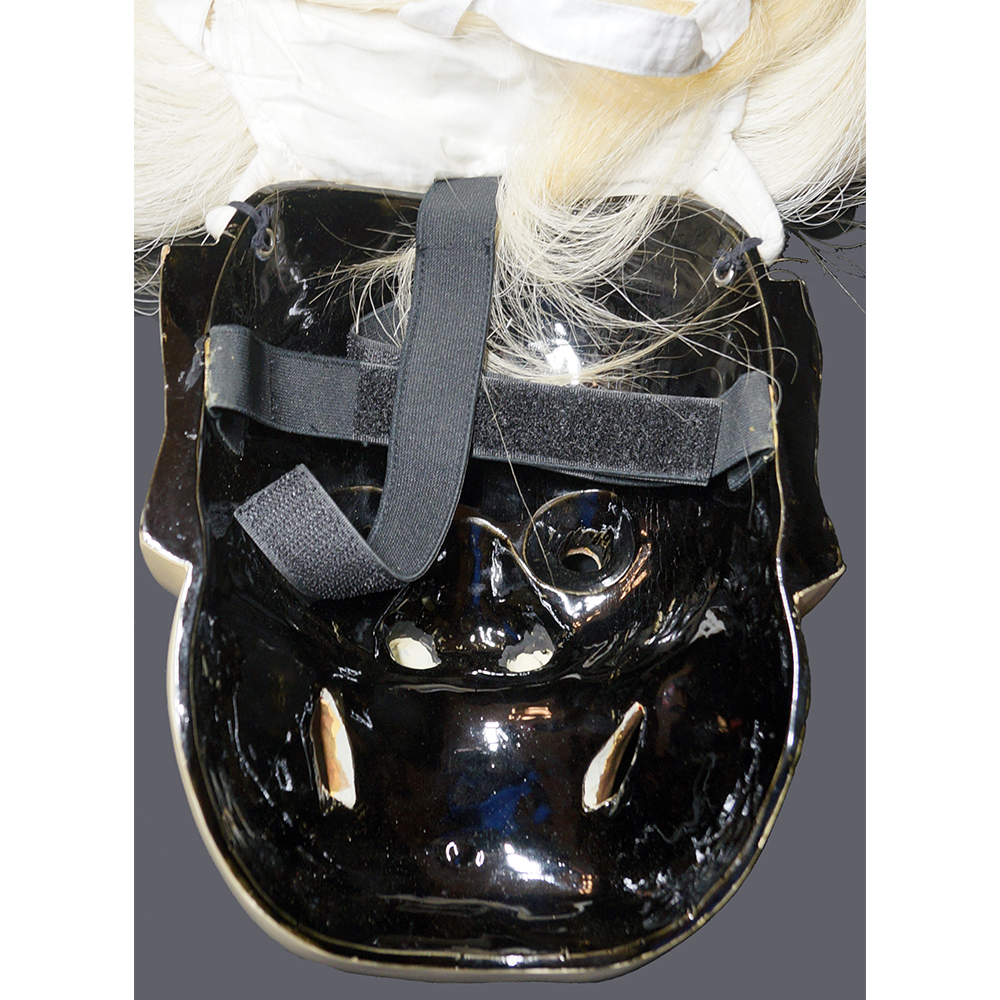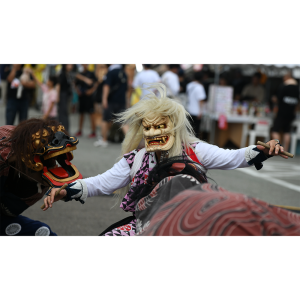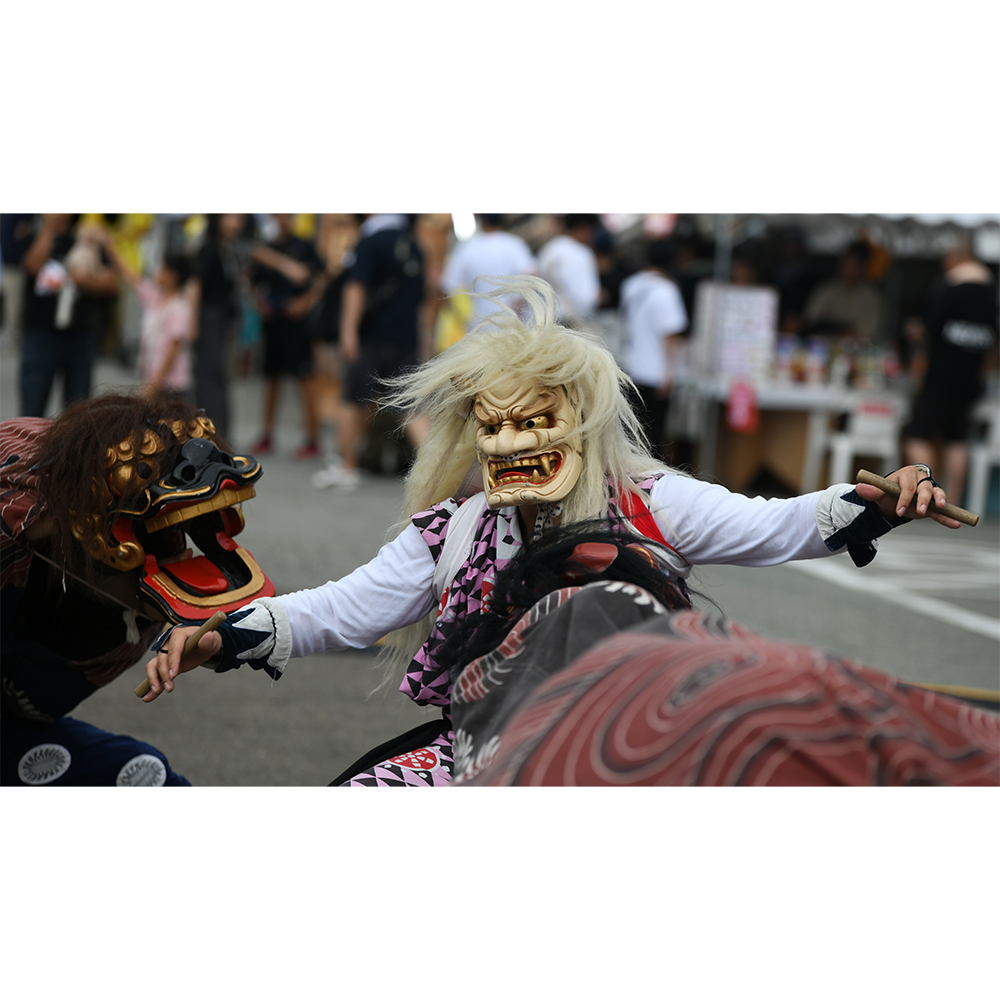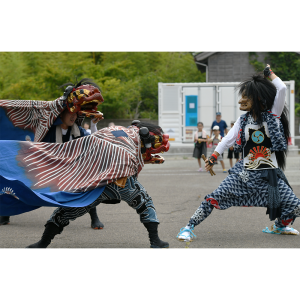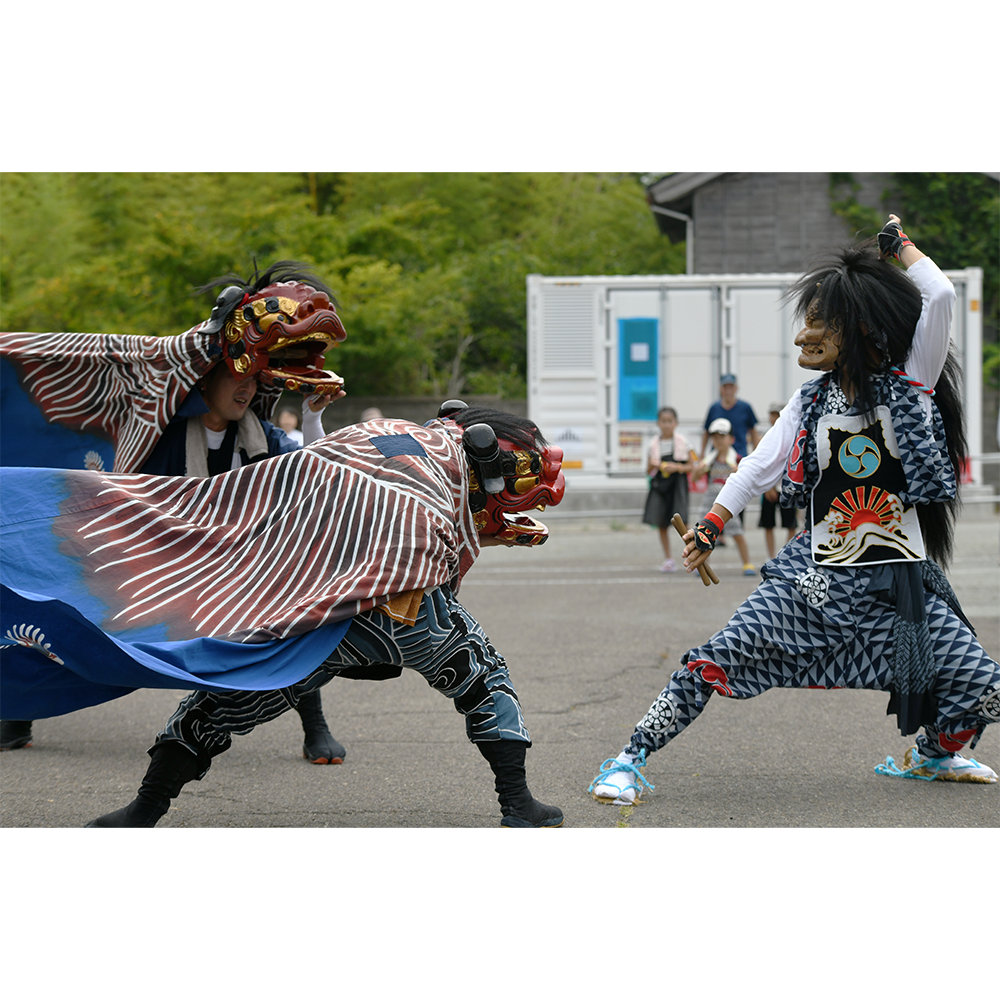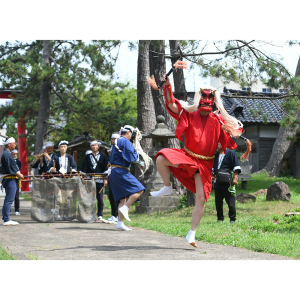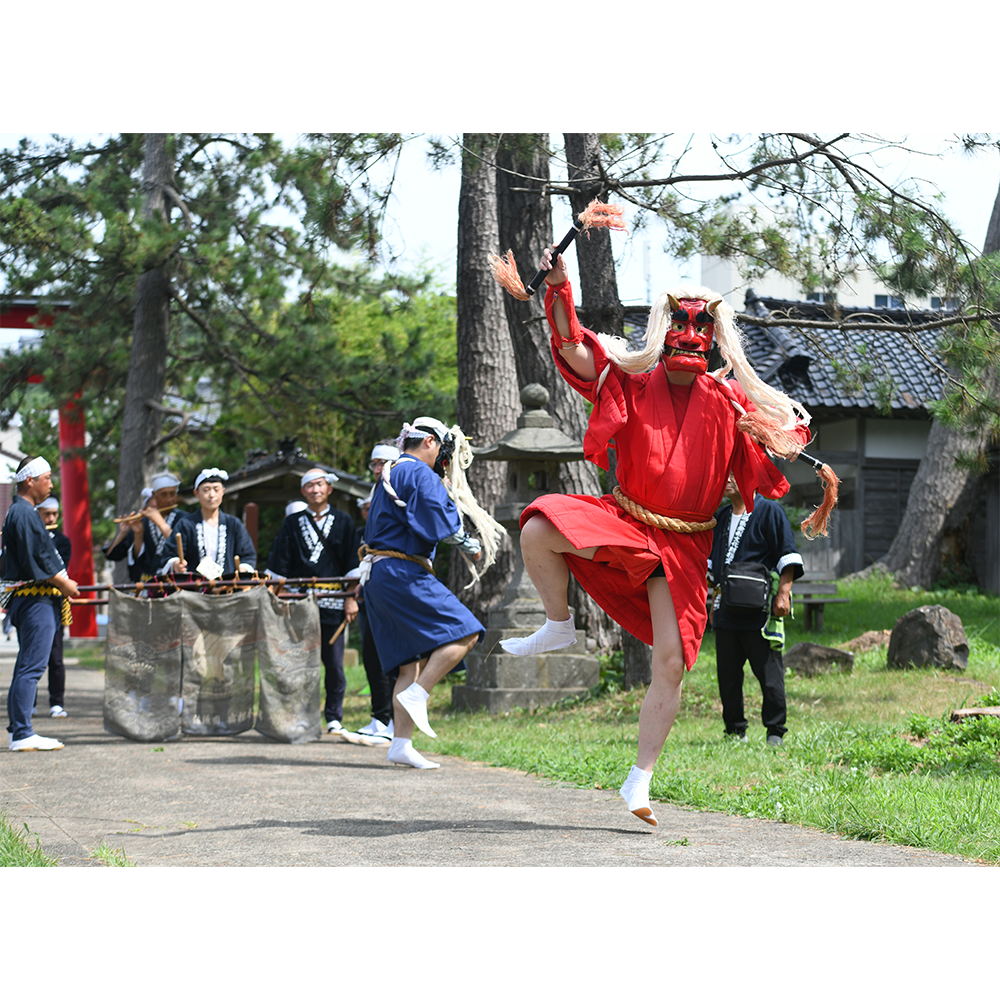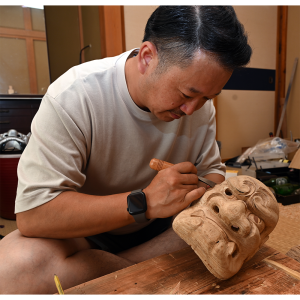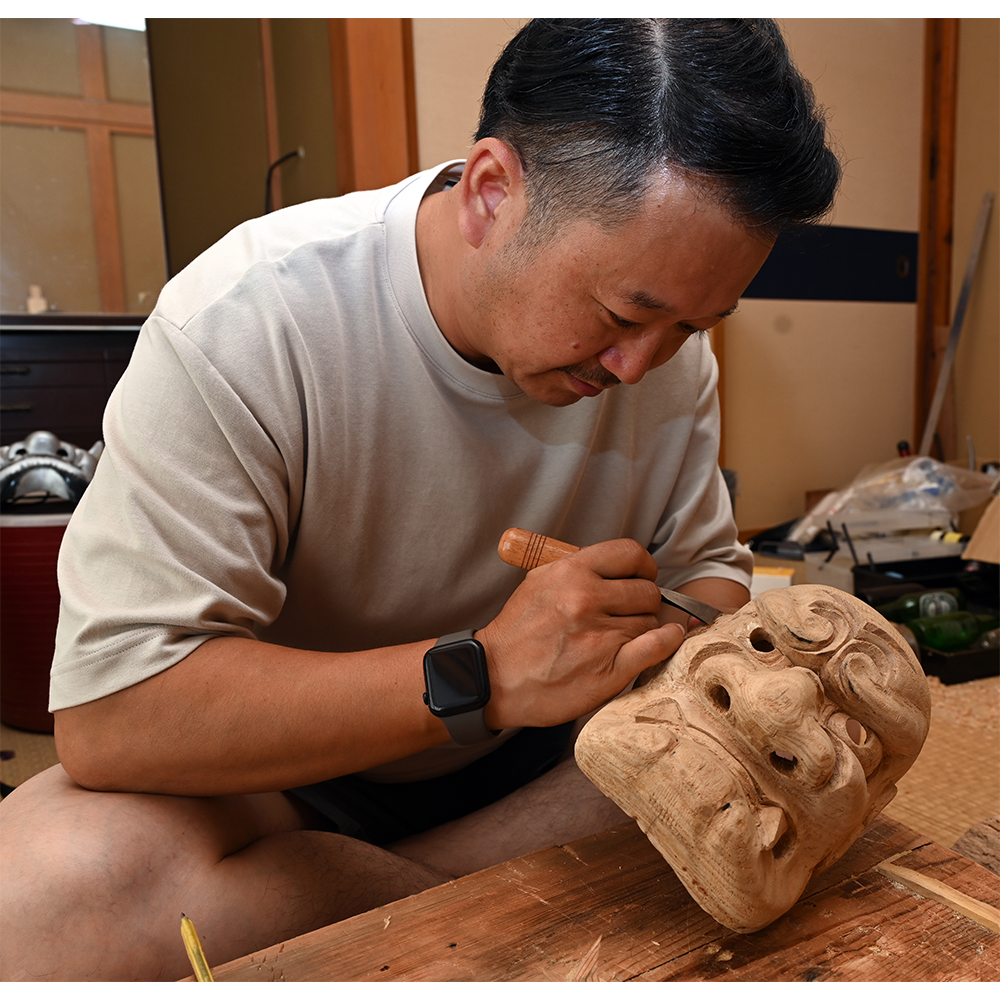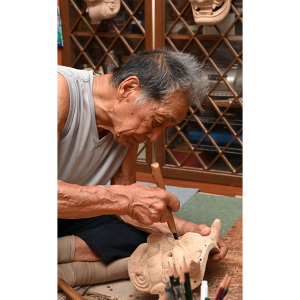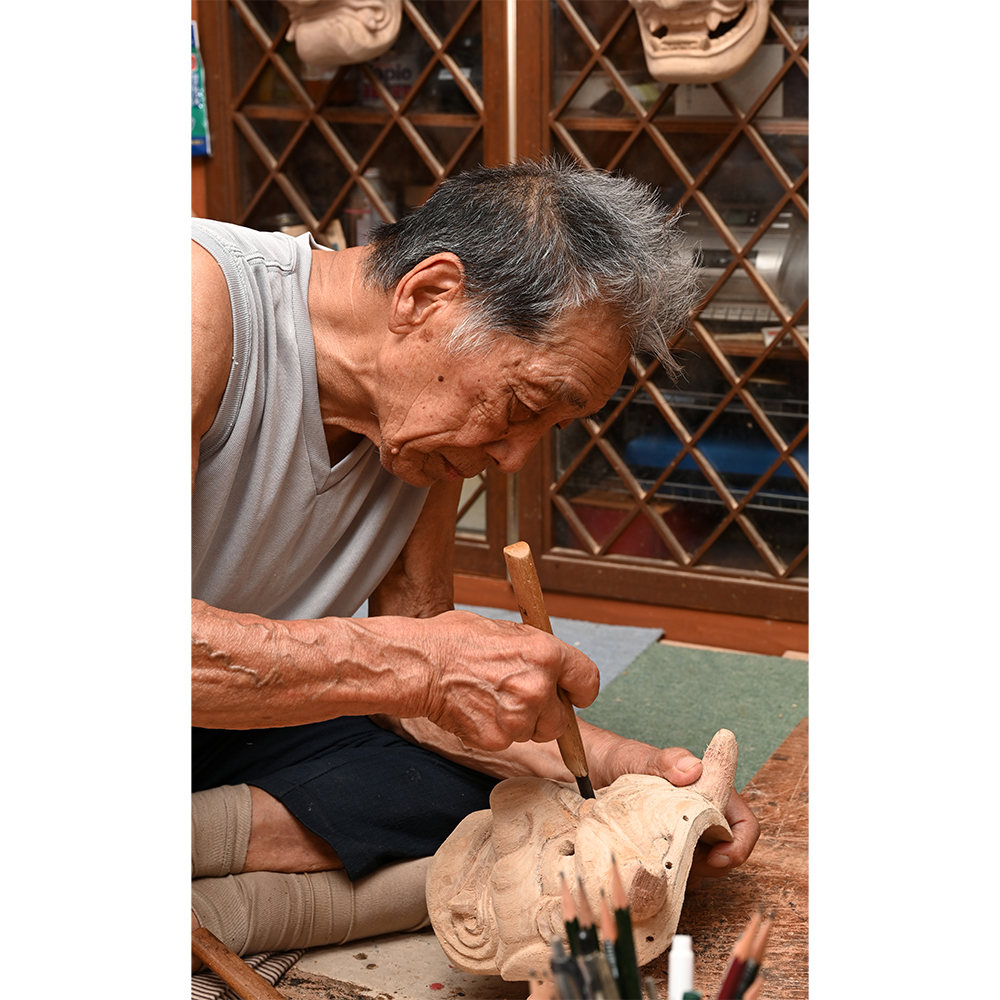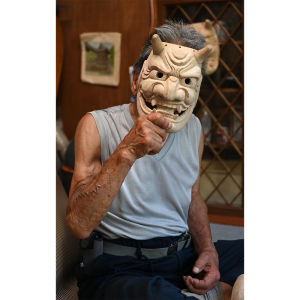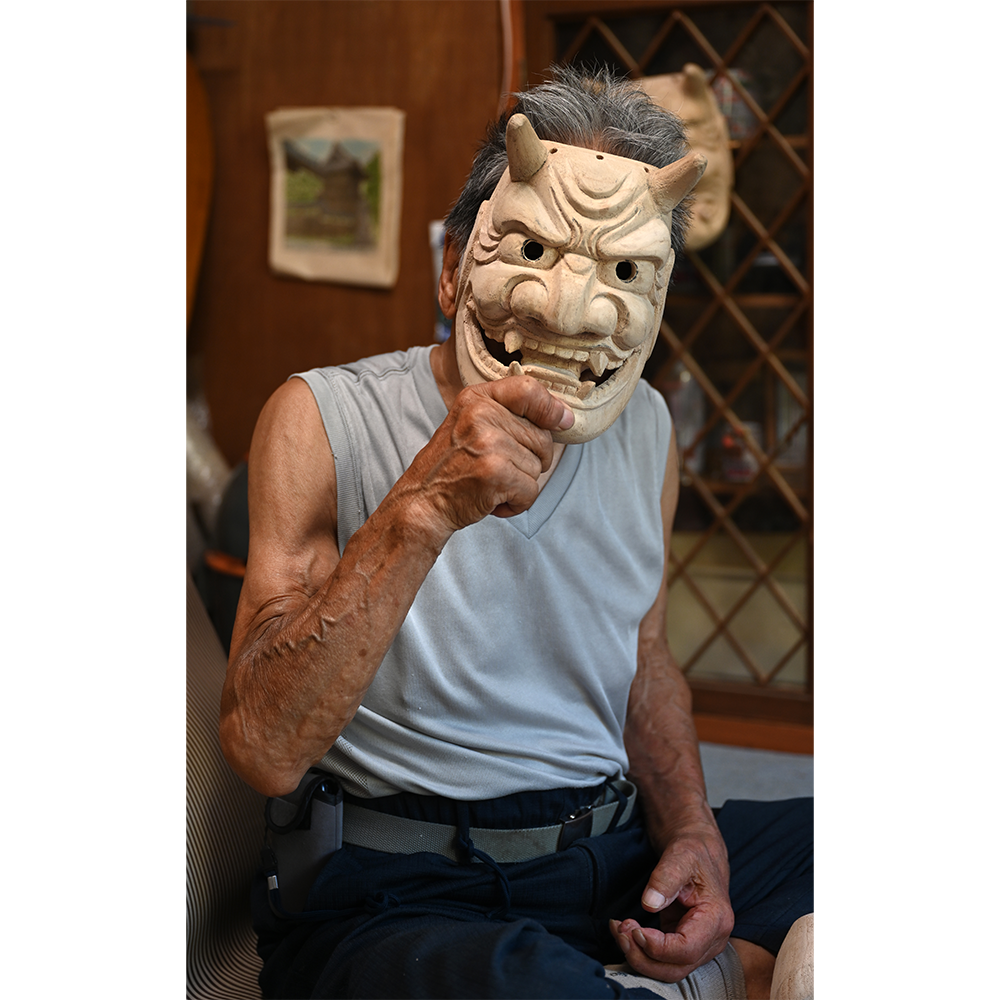TITLE: Onidaiko Oni Mask
TYPE: face mask
GENERAL REGION: Asia
COUNTRY: Japan
SUBREGION: Sado Island
ETHNICITY: Japanese
DESCRIPTION: Onidaiko female oni (demon) Katagami-style mask
CATALOG ID: ASJP025
MAKER: Ohoshima Jyunji (Fukuchiyama City, Kyoto, 1930- )
CEREMONY: Onidaiko Dance
FUNCTION:
AGE: 2013
MAIN MATERIAL: wood
OTHER MATERIALS: paint; cashew tree lacquer; brass; gold dust; cloth; Velcro straps; horse hair
Onidaiko, also known less formally as Ondeko, is a dance performed solely on Japan’s Sadogashima (Sado Island). The word is a compound of oni and taiko. Taiko is a large, barrel-shaped drum, which is always played at the onidaiko dance. The word oni typically signifies a demon or ogre, but on Sadogashima the character is more a representative of the Shinto gods who protect the Sado villages. The masquerader represents this divine messenger who dances vigorously to the music of drums and sometimes other instruments in order to drive away evil spirits and to ensure a good harvest.
There are several types of Onidaiko dance on Sadogashima, typically divided into five categories. In the central and northeastern part of the island, Katagami drum style is popular. The Katagami group is preceded by a pair representing gods, known as mikomen, one of whom holds bells and the other a folding fan. A pair of oni (one male and one female) holding drumsticks dance slowly one at a time, usually with two lions (shishimai), suggesting a tie to China’s Tang Lion Dance. This mask represents a female oni of the Katagami style. If a lion bites an audience member’s head, it is considered to confer a blessing on that person.
In the south eastern part of the island is Maehama style, in which the male and female oni always dance together, and a flute is added to the drums. In addition, Roso (an old monk) wearing a half-mask confers blessings on the village. A pair of (unmasked) drummers may dance together. In some villages, the oni hold an axe or naginata (Japanese halberd) and dance on one foot.
In the north and west, Mamemaki style dominates. An okina (in the mask of an old man) prays for the well-being of the village while holding an eggplant or persimmon and symbolically scattering beans from a wooden box for good luck. He is guarded by two oni, one wielding a staff and the other a naginata (Japanese halberd), who do not dance. In the Mamemaki style, there are also a pair of masked dancers representing the mamemaki.
Near the town of Ogi in the southwest, Issoku style is most popular, and the oni jump on one foot while playing the drum.
Finally, in two villages on the eastern part of Sado, Hanagasa style is performed. There, the celebration involves many more participants, including a lion dance and folk singers, and women wear a straw hat decorated with flowers.
In most cases, the role of the oni and shishimai is to draw evil spirits from surrounding area and transfer them to the drum, which represents a sacred shrine, thereby purifying and protecting the village. Often, the drum has the tomoe symbol on it, representing water, which is essential to the success of agriculture. The dance is performed most commonly in the spring during rice sowing and sometimes in the fall at harvest. It may also be performed on other important occasions, such as regional and local festivals.
Onidaiko probably originates in Buddhist dances from the eight or ninth century C.E., although its precise origin is contested. Some believe it to have begun only in the Edo period (1603 to 1868).
Because the Museum has been unable to acquire an onidaiko mask from any maker or dance group on Sadogashima, this specimen was acquired from Inoue Corporation of Kyoto.
